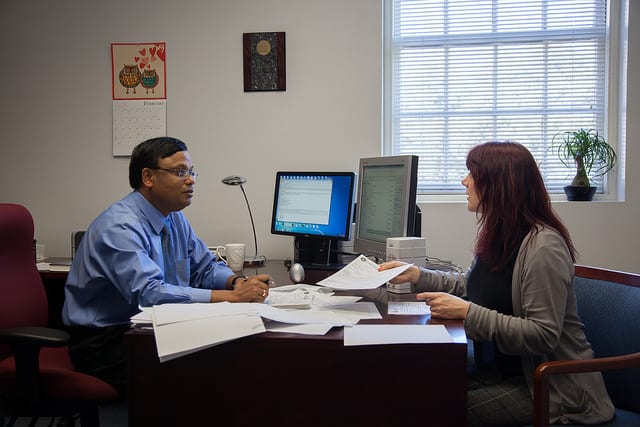 Efforts to reduce the time it takes to process contracts at SMU have been a huge success under a more streamlined method, say OE2C leaders, who found the previous contract process among the top complaints when polling campus employees.
Efforts to reduce the time it takes to process contracts at SMU have been a huge success under a more streamlined method, say OE2C leaders, who found the previous contract process among the top complaints when polling campus employees.
OE2C leaders believe the new system, which went into effect April 15, has already made significant strides in reducing employee frustration. The new method uses contract leads in each school to determine the course of each proposed contract – if it needs legal eyes on it, it goes to the Office of Legal Affairs for review, but if not, it advances through the next steps to completion.
“People were frequently looking for a work-around to avoid sending contracts to legal,” says Melanie Bailey, who previously worked in SMU Legal Affairs but was named under the OE2C initiative as senior contracts administrator in the Office of Business and Finance.
In the former process, all contracts (with few exceptions) went to Legal Affairs before they could be processed for signature. The contracts were not always “stuck in legal,” as was the perception, Bailey says; sometimes they were edited and returned to departments, vendors or other campus resource areas for revisions, and then sent back to legal. The result was a bottleneck of contracts waiting to be finalized.
Under its new process, SMU named 28 contract leads – existing employees designated by deans and vice presidents in each school and department – who were trained to review contracts, simplifying the process, Bailey says.
Since the new method launched, 575 contracts have been processed. Of those contracts completed, the average time to process standard contracts has been reduced to 2 days and the time for non-standard contracts has been reduced to 21 days.
Dean David Chard of the Annette Caldwell Simmons School of Education and Human Development, who co-chairs the contract initiative, describes the improvement in the number of completed contracts as “remarkable.”
“These data alone illustrate why we needed to do this and what can be accomplished,” he says.
The cycle time for contract reviews will continue to improve, says Paul Ward, vice president for Legal Affairs and Government Relations, “as additional standard templates are developed, a more robust purchasing function is established and as contract leads assume a more direct role.
“The Office of Legal Affairs is delighted to participate in this process,” Ward says.
The OE2C committee has mostly received positive feedback for its contract initiative. Dawn Norris, executive director of Student Life, says she’s thrilled with the revised process.
“We have a contract that we submit annually. Last year it took a month to process. This year, under the new system, it took one day,” Norris says.
Lydia Dale, student activities coordinator, says she’s also pleased with the recent changes.
“The OE2C contract initiative has made tremendous improvements in the processing of contracts involving student organizations. Due to the funding nature of student organizations, they don’t have a University org,” Dale says. “As a result all contracts, even simple purchasing-type agreements, had to be processed through the Office of Legal Affairs. This could delay the process by weeks, sometimes months. Through the new initiative, a procedure within Purchasing was created so we could bypass the org requirement, allowing a vendor-type agreement to be fully executed in one work day.”
Beginning this month, as part of its efforts to continuously optimize the process, OE2C will initialize Selectica, a software that tracks contracts from start to finish – analyzing dollar value, term, expiration and renewals in schools and departments.
“This will allow SMU to better track the business of the University and capture savings when it can,” says Bailey, adding the OE2C team will continue to look for ways to further improve the system.




